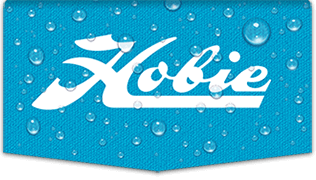|
After reading the forum for a while, I just joined it to pipe in on this post. It seems that 95% of people forget that these boats were created for people exactly like you; not to be one design racers and other blah blah blahs. If you have been surfing for 20 years, your instincts will take over. I’m also an avid surfer for 20+ years so I’ll speak in your language. It’s just like paddling a longboard out in head high surf; watching sets, waiting for the lulls, shoulder hopping, etc. The bigger it is the more you need the sets to be spread out. But you will need to be committed. I have singlehanded my 16 in a gusty 20kt offshore wind by mistake once but it never stopped my solo missions. With predominate sou’westers here, if we wait for anything other than offshore wind and heavy surf, we would never be able to go. The posts made by srm is right on but I’ll go a little more in depth.
First things first, your boat has to be well maintained. Especially if it is twenty-five years old, mine is. It will get beat up, but it is part of it and well worth it! If you fix your own surfboard dings, you are golden. To prepare it for the surf, some ideas for your rig is nylon rudder pins (better to shear them than the transom, it's ugly), working cam plungers with blue marine grease icing, cams prepped to be easily re-cocked, sails you don’t care about (I call mine my surf set), less than five year old anchor pins for 16's (the twisting will shear them just under the eye and de-mast you), and a tramp bag full of spare parts… You’ll quickly learn to buy two of everything.
I picked up tips from ex-Worrell 1000 sailors; try to hunt down the new breed, Tybee 500 sailors, for tips. They go through your town racing. Offshore wind is challenging for me so here goes. Everything might sound counter-intuitive. If your boat is a turbo, the jib helps pull the bows down and gives the boat drive. But watch for pearling bows. On the water’s edge, not in the water yet, car out and release the main so it is free. Spin the bows to sea until your opposite bow is starting to touch the water. You will be on the windward side so you can hold the boat down. Take a breather, get your head right, and watch the surf to pick your shot. Right before the surf starts to float the boat, drop the rudders and trim the main a little bit. Here we go! Finish the boat’s point into the surf. You are committed here so pick your set well. Your main has been pre-loaded and will help push off the beach. If you have a crew, and they slip, you have to leave them and come back. If you stop, the boat will pick up and slam backwards. As you finish turning downwind, push off and jump on going to your knees onto the trampoline. If the boat wants to go back to the eye of the wind, ease off the main. Power up as you gain speed to the lineup. Never go when the tide is going out, the surf is less manageable and will suck you into them. Lock the leeward rudder ASAP. Try to keep it down as you pass over the bars. The other, fluttering up-rudder will help you track. Stay away from feathering waves, it’s better to depower (but not fully) and let it break in front of you. As you enter the foam head on, perpendicular to it, shift all weight to the front cross bar (think of duckdiving). You can even stand up holding onto the mast in some cases, so you don't get swept off the trampoline. As it passes, lock the second rudder and gain as much speed as you can, quartering and shoulder hopping, as you go out. Repeat approach if you come across a sneaker set.
Let’s just say the wind shifted and it is now onshore as you return to the beach. Coming in on a beam reach, with speed, start to enter the lineup. Now turn your head around, not your hips, and look behind you to the ground swells approaching your stern. Start to catch the wave you pick and get hoots from the smiling folks in the lineup. Here you get to snake SUPers once and for all. As it closes out, sail into the slough and over the reform. Let the shorepound break in front of you and quickly sail onto the beach. Dump the wind from the sails. Your entire mission at this point is to jump off, get to the front crossbar, and drag the boat up while it is still somewhat floating in the skim. When you’re not floating anymore and the boat naturally wants to weather-vane around or blow over, go with the boat into the wind. If you leave the rudders kicked up in the shore break; say bye bye to your rudders slamming side to side.
Try to run these scenarios in your head, off and on, for a few days or weeks. Write it out or draw a picture of it. Don’t try it tomorrow. A pro golfer can't tell you how to swing and you automatically know it. Don’t be anxious or nervous about it. You’ll find riding that bike w/o training wheels is pretty easy… and FUN! Eddie Would Go!!
|





